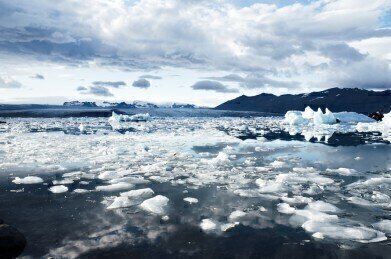Environmental Laboratory
Is the Arctic Doomed?
Jun 29 2016
For some years now, there has been growing concern regarding the future of our planet due to the effects of manmade global warming, with the polar ice caps most at risk from undergoing drastic temperature changes. This is especially true in the Arctic Circle; while the Antarctic has been paradoxically growing in terms of snow ice, Arctic ice levels are at an all-time low.
A series of infographics compiled by National Snow and Ice Data Centre (NSIDC) researcher Andrew Slater has underlined just how pressing a concern this is, with the data showing unprecedented levels of snowmelt which surpass even our most pessimistic projections.
A self-perpetuating problem
With the advent of manmade climate change, temperatures have been gradually rising around the world. Due to its location in the extreme north of the planet, the Arctic has been most susceptible to the changes this brings in terms of its topography and its ability to act as a safe habitat for all manner of flora and fauna.
The discovery of methane bubbles and other greenhouse gases (GHGs) trapped beneath the ice has exacerbated these concerns. If the ice is to melt (as is happening at an alarming rate even now), the methane could escape into the atmosphere, thus raising the temperature even further and melting more ice. As such, the cycle would turn out to be a self-perpetuating one – until no ice remains and seas rise to devastatingly high levels. Not only would this play havoc with any number of natural ecosystems, it would also irretrievably flood lower-lying cities, towns and islands around the world.
Clearly, such a scenario must be avoided at all costs. Despite last year’s COP21 talks in Paris, at which 196 nations from around the world agreed to prevent global warming from climbing above harmful levels, the new data from Slater appears to show that this is one fight we are losing.
More under threat than imagined
The infographics from the NSIDC show that 2016 is breaking all manner of records when it comes to Arctic climate. Not only are this year’s temperatures up hugely from the average between 1980 and 2015, there have also been an alarming number of anomalously hot days so far – and we’re only at the start of July.
The figures project that the water in the Arctic will climb above freezing point within a matter of days or weeks, while water quality research in the Arctic has revealed that the extent of the ice is far below the average levels from 1979 to 2015. Even more concerning, the amount of actual ice is even less than our most pessimistic estimates had predicted.
According to the data, only the most northerly regions of ice have as yet held out against the onset of climate change. However, as the surrounding ice rises in temperature and begins to melt, this will have a knock-on effect on everything around it, possibly condemning the entirety of Arctic ice to extinction.
For this reason it’s imperative we achieve our target of avoiding a global temperature rise of 2°C – or better yet, 1.5°C. Unfortunately, even if we do meet these goals, it might not be enough to save the floundering Arctic tundra.
Digital Edition
IET 34.2 March 2024
April 2024
Gas Detection - Biogas batch fermentation system for laboratory use with automatic gas analysis in real time Water/Wastewater - Upcycling sensors for sustainable nature management - Prist...
View all digital editions
Events
Apr 24 2024 Jakarta, Indonesia
Apr 24 2024 Sao Paulo, Brasil
Apr 30 2024 Melbourne, Australia
Apr 30 2024 Birmingham, UK
May 03 2024 Seoul, South Korea


















